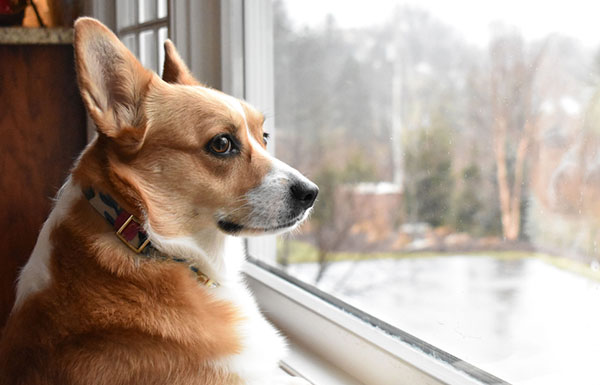Have you walked through the door, eager for a warm welcome by your furry friend, only to find them whining and chewing on your favorite couch? Isn’t it a heartbreaking sight that fills you with worry? That’s where separation anxiety in dogs comes into play. You hate to see your beloved companion in such distress, especially when you’re not there to comfort them.
But here’s the silver lining: there are simple ways to ease the stress and bring peace back into your home. With patience, understanding, and love, you can help your pup overcome their anxiety. So, let’s get on this journey together to make every homecoming a moment of pure joy.
Understanding Separation Anxiety in Dogs
Think of separation anxiety like a dog panic attack. The dog gets stressed when apart from its favorite people. Watch for signs of separation anxiety in dogs, such as pacing, barking, and accidents.
Easing Your Dog’s Anxiety
Here are two key goals: help your dog feel less dependent on you and teach them to relax when you’re gone. Below are some general tips to achieve these goals.
- Create a routine: Set consistent meal times, walks, and playtime to help your dog feel secure and establish a sense of stability in their daily life.
- Safe space: Create a comfy spot with familiar things. Give treats when they use it so they know it’s a good place.
- Stay connected: Use video calls, leave your scent on a worn t-shirt, or try a remote treat dispenser. These can help your dog feel connected.
- Calm goodbyes and hellos: Practice saying goodbye and hello to your dog calmly by keeping your tone gentle and movements relaxed when leaving or returning home.
- Calming aids: Talk to your vet about home remedies for separation anxiety in dogs, like natural calming aids such as herbal supplements or calming sprays.
- Professional help: For severe cases, your vet may prescribe medication. A trainer or behaviorist can create a plan for your dog’s needs.
Exercises To Ease Separation Anxiety in Dogs
If you’re considering how to treat separation anxiety in your dog, remember exercise is important for their health and happiness. Take your dog for a walk around the neighborhood, play fetch with a ball or stick at the park, or let them run around in a fenced yard. You can also engage in a tug-of-war with a rope toy or set up a simple obstacle course using items you have at home, like chairs or boxes.
If your dog enjoys swimming, and you can access a safe area, you can take them swimming in a lake or a dog-friendly pool. Another option is to hike in nature, where your dog can explore new sights and smells while getting some exercise.
No matter what activity you choose, the key is to make it fun and engaging for your dog. Pay attention to the dog’s energy levels and adjust the intensity and duration of the exercise accordingly.
Enrichment Activities
Keep your dog entertained with engaging games and activities. Introduce toys that challenge them mentally, such as puzzle toys or treat-dispensing toys. Hide their toys or treats around the house for a game of hide-and-seek. Spend quality time teaching them new tricks or practicing old ones; it’s a fantastic way to keep their minds active.
Create a Calm Atmosphere To Ease Separation Anxiety in Dogs
Enhance your dog’s space by creating a peaceful environment. Play soft, gentle music in the background to help them relax. Keep their area bright with lots of natural sunlight, which can lift their spirits. These simple changes can help your furry friend feel better and ease separation anxiety.
As we wrap up, remember that your furry friend relies on you for comfort and security. The journey of easing separation anxiety in dogs isn’t always easy. Each step you take to create a calming environment and engage them in activities is a step toward their happiness.
Together, you and your beloved companion can ease separation anxiety and fill your home with warmth and joy. Your efforts matter more than you know; therefore, keep loving and supporting your furry friend every step of the way.
Frequently Asked Questions
Q: How to stop separation anxiety in dogs?
A: Establish a routine, create a calm environment, and gradually get your dog used to being alone.
Q: Can you train a dog out of separation anxiety?
A: Yes, with patience, consistency, and positive reinforcement training methods, dogs can learn to manage their anxiety.
Q: What is the best treatment for dogs with separation anxiety?
A: The best treatment often involves a combination of behavior modification, environmental changes, and sometimes medication prescribed by a veterinarian.
